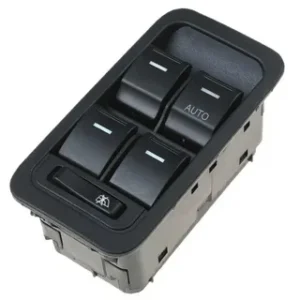Radiant heat: The Future of Efficient Home Heating systems

Radiant heat systems are gaining traction as an efficient alternative for modern homes. Unlike conventional heating methods that can leave cold spots in your living space, radiant-heat warms up rooms uniformly from the ground up. Imagine stepping onto a cozy floor on a winter morning or enjoying consistent warmth throughout every corner of your home without those pesky fluctuations in temperature.
How do Radiant-heat Systems work?
Radiant-heat systems operate on a simple yet effective principle. They distribute warmth from the floor or walls instead of relying on forced air, creating a cozy environment. These systems use either electric heating elements or water-filled tubing. In hydronic setups, hot water circulates through pipes beneath the flooring. The warm surfaces then radiate heat upward, warming the room evenly.
Electric radiant floors employ wires that generate heat when powered. This heats the surface instantly and keeps your feet toasty during chilly days. The result is an efficient form of heating that minimizes energy loss. No drafts or cold spots here; just consistent warmth in every corner of your space. This method also allows for lower thermostat settings without sacrificing comfort. It’s like having nature's gentle embrace right within your home, making winter nights much more enjoyable.
Benefits of Using a Radiant-heat System
Radiant-heat systems offer unparalleled comfort in home heating. They provide warmth from the ground up, eliminating cold spots often found with traditional methods. One of the standout benefits is energy efficiency. Radiant systems heat spaces evenly, allowing for lower thermostat settings without sacrificing comfort. This efficient method can lead to significant savings on energy bills. Another advantage is improved air quality.
Unlike forced-air systems, radiant-heat doesn’t stir up dust or allergens, creating a healthier environment for everyone in the household. Installation flexibility adds to their appeal as well. Whether you choose hydronic or electric options, radiant-heat can easily be integrated into new builds or retrofitted into existing homes. Many homeowners appreciate the silent operation of these systems. Without noisily blowing air or radiators clanking away, your space remains serene and peaceful while staying warm and inviting.
Types of Radiant-heat Systems
Radiant-heat systems come in different types, each designed to cater to various needs and preferences. The most common types are hydronic and electric systems.
Radiant Floor Heating
Installed beneath floors, this system heats the space from the ground up, providing even warmth and eliminating cold spots, often using electric cables or hydronic tubing.
Radiant Wall Heating
Heating panels embedded in the walls radiate warmth throughout the room, offering an efficient and space-saving solution for both residential and commercial settings.
Radiant Ceiling Heating
Similar to wall heating, ceiling-mounted systems provide warmth from above, ensuring comfortable conditions while not taking up floor space.
Electric Radiant-heating Panels
These are surface-mounted electric panels that emit heat directly into the room, providing an easy-to-install and energy-efficient option for heating smaller areas.
Maintenance and Longevity of Radiant-heat Systems
Maintaining a radiant-heat system is simpler than you might think. Regular inspections are key. Checking for any leaks or blockages helps ensure optimal performance. The longevity of these systems can be impressive, often lasting over two decades with proper care. It's essential to keep the components clean and well-functioning.
For hydronic systems, monitoring the fluid levels and ensuring there’s no air trapped in the pipes is crucial. This prevents inefficiencies and costly repairs later on. Electrical radiant-heating requires minimal upkeep but still benefits from periodic checks on wiring and connections. Investing time in maintenance means enjoying comfort without unexpected disruptions. A little attention goes a long way in keeping your home cozy season after season.
Environmental Impact of Radiant heat Systems
Radiant heat systems stand out for their minimal environmental footprint. Unlike traditional heating methods that rely on fossil fuels, many radiant systems utilize electricity or renewable energy sources. This shift dramatically reduces greenhouse gas emissions. Efficiency is another key factor. These systems distribute heat evenly across spaces, ensuring less energy is wasted compared to forced-air heaters. As a result, homes can maintain comfort with lower energy consumption.
Moreover, radiant-heating often requires less maintenance than conventional systems. With fewer components and no ducts to clean or replace, there's reduced waste over time. As homeowners become increasingly eco-conscious, opting for radiant-heat aligns perfectly with sustainable living practices. The ability to harness solar power in some installations further enhances its appeal as an environmentally friendly choice for modern homes.
Comparing Radiant-heat Systems to Traditional Heating Methods
When it comes to heating your home, traditional methods like forced air systems are common. However, radiant-heat systems present an intriguing alternative. Traditional heating often relies on blowing hot air through ducts. This can lead to uneven temperatures and drafts. Radiant-heat, in contrast, warms surfaces directly—like floors or walls—and offers a more consistent warmth throughout the space. Energy efficiency is another area where radiant systems shine.
They use less energy because they maintain lower water temperatures compared to conventional boilers. This translates into reduced energy bills and a smaller carbon footprint. Comfort also distinguishes radiant-heat from its counterparts. With no noisy fans or ductwork disturbances, you enjoy a quieter environment free from cold spots. The gentle warmth envelops you seamlessly for an unparalleled cozy experience during those chilly months. Choosing between these options requires careful consideration of comfort preferences and overall effectiveness for your unique living situation.
Why Radiant-heat Is the Future of Home Heating
Radiant-heat is revolutionizing how we think about home heating. As homeowners seek more efficient and comfortable solutions, this system stands out. Unlike traditional methods, radiant-heat warms objects and surfaces directly. This delivers a cozy warmth that's evenly distributed throughout the room. No cold spots here! Energy efficiency is another game-changer. Radiant systems often use less energy than forced-air systems, leading to lower utility bills over time.
Moreover, they operate quietly without the disruptive noise of fans or ducts cycling on and off. Health benefits are also noteworthy. Radiant-heating reduces allergens by eliminating dust movement associated with conventional ventilation systems. As technology advances, these systems are becoming more accessible and affordable for everyone. The future looks bright for those who embrace radiant-heat solutions in their homes.
Discover the Comfort and Efficiency of Radiant-heat Systems
Radiant-heat systems transform the way we experience warmth in our homes. Instead of circulating heated air, these systems provide gentle warmth from the floor up. This creates a cozy environment that is hard to match. Imagine stepping onto a warm tile in winter. That comfort radiates throughout your space, eliminating cold spots common with traditional heating methods.
Efficiency is another highlight of radiant-heat. By operating at lower temperatures compared to forced-air systems, they use less energy while delivering consistent warmth. These systems can be installed under various flooring types, making them versatile for any room design. Plus, they are quiet; no more noisy ducts or blowers interrupting your peace. Discover how radiant-heating not only enhances comfort but also elevates energy efficiency in your home.
How Radiant-heat Provides Even and Cozy Warmth for Every Room
Radiant-heat systems excel at delivering consistent warmth throughout your home. Unlike traditional heating methods that rely on forced air, radiant-heat warms surfaces directly. This creates a gentle and even temperature in every room. As the system heats floors, walls, and furniture, the warmth radiates upward into the space. You’ll notice that there are no cold spots or drafts to contend with. It feels natural and inviting.
Imagine stepping onto a warm tile floor on a chilly morning — it’s a luxury many homeowners cherish. The comfort extends beyond just floors; walls also contribute to maintaining an even climate. This method of heating enhances overall comfort levels while promoting well-being in your living environment. No more juggling between different thermostats for various rooms; radiant-heat provides uniformity across all spaces effortlessly.
Conclusion
Radiant heat systems are transforming the way we think about home heating. Their innovative approach not only boosts efficiency but also enhances comfort levels. With a variety of options available, homeowners can find the perfect fit for their needs. From electric mats to hydronic systems, each type offers unique advantages and adaptability. As energy costs continue to rise, investing in radiant-heat becomes increasingly appealing. The potential savings on utility bills cannot be overlooked.
FAQs
What is a radiant heat system?
A radiant heat system warms up spaces by directly transferring heat from surfaces such as floors or walls into the living area. This method eliminates cold drafts and uncomfortable temperature fluctuations often associated with traditional heating methods.
Is radiant-heating expensive to install?
The initial installation cost can be higher than conventional systems, primarily due to labor and materials. However, many homeowners find that energy savings over time offset these upfront expenses.
How long do radiant-heat systems last?
With proper maintenance, most radiant-heating systems can last for decades. Regular checks ensure they run efficiently without any significant repairs needed along the way.
Can I use existing flooring with a radiant-heat system?
It depends on the type of flooring you choose. Some materials like tile work well with heated floors because of their thermal conductivity, while others may not distribute warmth effectively or could be damaged by high temperatures.
|
Related Business Listings |






